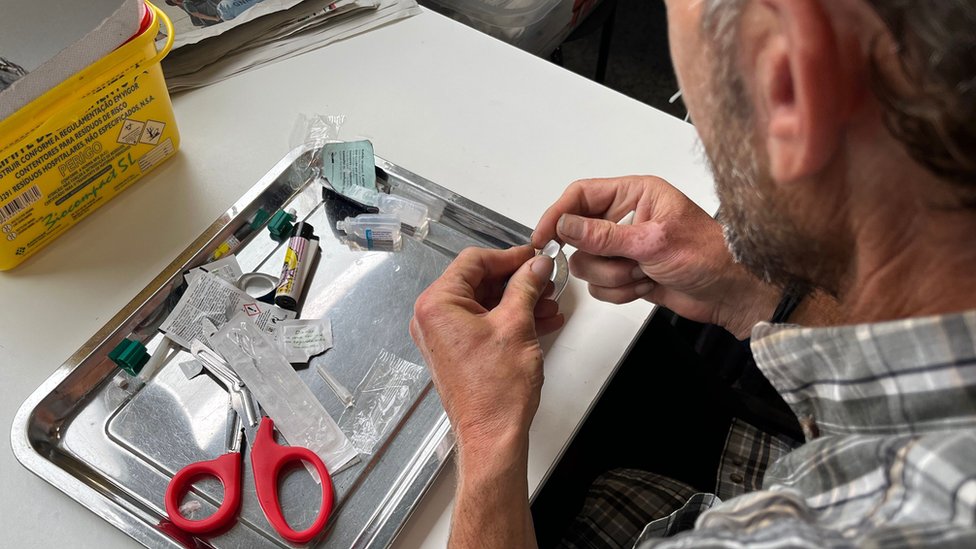
UC San Diego Health Layoffs and Their Impact on Sustainable Development Goals
Overview of Layoffs
UC San Diego Health announced layoffs affecting approximately 230 employees, representing about 1.5% of its workforce. The layoffs include frontline healthcare providers such as pharmacists, clinical social workers, and clinical laboratory scientists. This decision was attributed to financial pressures stemming from federal healthcare impacts, regulatory uncertainty, and rising care costs.
Implications for Sustainable Development Goals (SDGs)
The layoffs raise significant concerns related to several SDGs, particularly:
- SDG 3: Good Health and Well-being – The reduction in frontline healthcare staff threatens patient safety, continuity of care, and quality of health services.
- SDG 8: Decent Work and Economic Growth – Job losses impact workforce stability and employee well-being.
- SDG 10: Reduced Inequalities – Disruptions in healthcare services may disproportionately affect vulnerable populations relying on these services.
Stakeholder Responses
UC San Diego Health Statement
- Emphasized provision of full university benefits and transitional career support for affected employees.
- Expressed gratitude for employee contributions and commitment to maintaining a resilient workforce of over 14,000 team members.
Union Criticism and Concerns
- The University Professional and Technical Employees (UPTE) union condemned the layoffs as unjustified and hazardous to patient care.
- Reported instances where staff were dismissed abruptly, sometimes mid-shift, without proper handoff, risking continuity of care.
- Highlighted that layoffs affect critical clinical roles already experiencing national shortages, including clinical laboratory scientists whose work underpins 70% of medical decisions.
- Raised concerns that reductions in clinical laboratory services could increase diagnostic errors, undermining SDG 3.
Financial Context and Disputes
- UC San Diego Health cited severe financial constraints as the rationale for layoffs.
- UPTE challenged this narrative, noting no significant federal funding cuts and a proposed 5% increase in state funding for the University of California system.
- The union pointed to a recent $20 million loan from UC San Diego Health to Palomar Health, suggesting a misalignment of financial priorities favoring expansion over staffing and patient safety.
Broader Systemic Issues and Calls to Action
- A UPTE report titled Misplaced Priorities documented systemic underinvestment in frontline staff across the UC system.
- At UCSD’s Hillcrest hospital, 5.6% of emergency room patients left without being seen in 2023, more than double the statewide average, indicating compromised access to care (SDG 3).
- The union demands immediate reinstatement of all laid-off staff and cessation of further reductions to safeguard patient care quality and workforce stability.
Conclusion
The layoffs at UC San Diego Health present critical challenges to achieving Sustainable Development Goals related to health, decent work, and reduced inequalities. Addressing these concerns requires balancing financial sustainability with the imperative to maintain safe, equitable, and high-quality healthcare services.
1. Sustainable Development Goals (SDGs) Addressed or Connected
- SDG 3: Good Health and Well-being
- The article discusses layoffs of frontline healthcare providers, impacting patient safety and staffing levels, which directly relates to ensuring healthy lives and promoting well-being for all ages.
- SDG 8: Decent Work and Economic Growth
- The layoffs and concerns about workforce treatment and job security connect to promoting sustained, inclusive, and sustainable economic growth, full and productive employment, and decent work for all.
- SDG 10: Reduced Inequalities
- The article highlights issues of labor rights and fair treatment of employees, which relate to reducing inequalities within and among countries.
2. Specific Targets Under Those SDGs Identified
- SDG 3 Targets
- Target 3.c: Substantially increase health financing and the recruitment, development, training, and retention of the health workforce in developing countries.
- Target 3.8: Achieve universal health coverage, including financial risk protection and access to quality essential healthcare services.
- SDG 8 Targets
- Target 8.5: Achieve full and productive employment and decent work for all women and men, including for young people and persons with disabilities, and equal pay for work of equal value.
- Target 8.6: Reduce the proportion of youth not in employment, education, or training.
- SDG 10 Targets
- Target 10.2: Empower and promote the social, economic, and political inclusion of all, irrespective of age, sex, disability, race, ethnicity, origin, religion, or economic or other status.
3. Indicators Mentioned or Implied to Measure Progress
- Indicators Related to SDG 3
- Staffing levels of frontline healthcare providers (pharmacists, social workers, laboratory scientists) as a measure of health workforce capacity.
- Percentage of emergency room patients leaving without being seen (5.6% at UCSD Hillcrest hospital), indicating access and quality of care.
- Incidence of diagnostic errors potentially linked to reductions in clinical laboratory services.
- Indicators Related to SDG 8
- Number and percentage of employees laid off (1.5% of workforce), reflecting employment stability.
- Access to transitional career support and benefits for laid-off employees, indicating quality of employment conditions.
- Indicators Related to SDG 10
- Fairness and transparency in workforce decisions, such as proper handoff of patient care responsibilities and timely communication of layoffs.
- Union reports on systemic underinvestment in frontline staff, reflecting social and economic inclusion.
4. Table: SDGs, Targets and Indicators
| SDGs | Targets | Indicators |
|---|---|---|
| SDG 3: Good Health and Well-being |
|
|
| SDG 8: Decent Work and Economic Growth |
|
|
| SDG 10: Reduced Inequalities |
|
|
Source: cbs8.com







